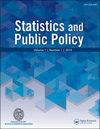STATISTICAL APPROACHES FOR ASSESSING DISPARATE IMPACT IN FAIR HOUSING CASES
IF 1.5
Q2 SOCIAL SCIENCES, MATHEMATICAL METHODS
引用次数: 0
Abstract
The measurement of the disparate impact of a particular de facto discriminatory policy on a minority or otherwise legally protected group has been of importance since passage of the Civil Rights Act of 1964. When the data available for the measurement of disparate impact, as embodied in the so-called “disparity ratio,” come from samples, a statistical approach naturally suggests itself. This article reviews both the law and statistics literature with regard to statistical inference applicable to the disparity ratio and related measures of disparate impact. From that review, three primary approaches are evaluated, the difference in so-called “rejection” rates for the protected and non-protected groups, their ratio (the disparity ratio), and the natural logarithm of the disparity ratio. For various reasons, the direct ratio estimator is recommended for use in all but small samples, where the log-ratio approach is to be preferred. The main points are illustrated with two fair housing examples, one being the possible discriminatory effect by race owing to a landlord’s refusal to accept Section 8 housing vouchers in lieu of cash rent, and the other being the effects of occupancy restrictions on families with children. Various methodological issues that arise in the application of these three estimation approaches are addressed in the context of the more complex sample designs that underlie the data utilized.评估公平住房案件中差别影响的统计方法
自1964年《民权法案》通过以来,衡量一项特定的事实上的歧视性政策对少数群体或其他受法律保护的群体造成的差别影响一直很重要。当可用于测量差异影响的数据(体现在所谓的“差异比”中)来自样本时,统计方法自然就会出现。本文回顾了法律和统计学文献中关于差异比的统计推断和差异影响的相关措施。从审查中,评估了三种主要方法,即受保护和非受保护群体的所谓“拒绝”率的差异,它们的比率(差距比)和差距比的自然对数。由于各种原因,建议在除小样本外的所有样本中使用直接比率估计器,其中对数比方法是首选方法。用两个公平住房的例子说明了要点,一个是由于房东拒绝接受第8条住房券代替现金租金而可能产生的种族歧视影响,另一个是对有孩子的家庭的占用限制的影响。在这三种估计方法的应用中出现的各种方法问题在使用数据的基础上更复杂的样本设计的背景下得到解决。
本文章由计算机程序翻译,如有差异,请以英文原文为准。
求助全文
约1分钟内获得全文
求助全文
来源期刊

Statistics and Public Policy
SOCIAL SCIENCES, MATHEMATICAL METHODS-
CiteScore
3.20
自引率
6.20%
发文量
13
审稿时长
32 weeks
 求助内容:
求助内容: 应助结果提醒方式:
应助结果提醒方式:


